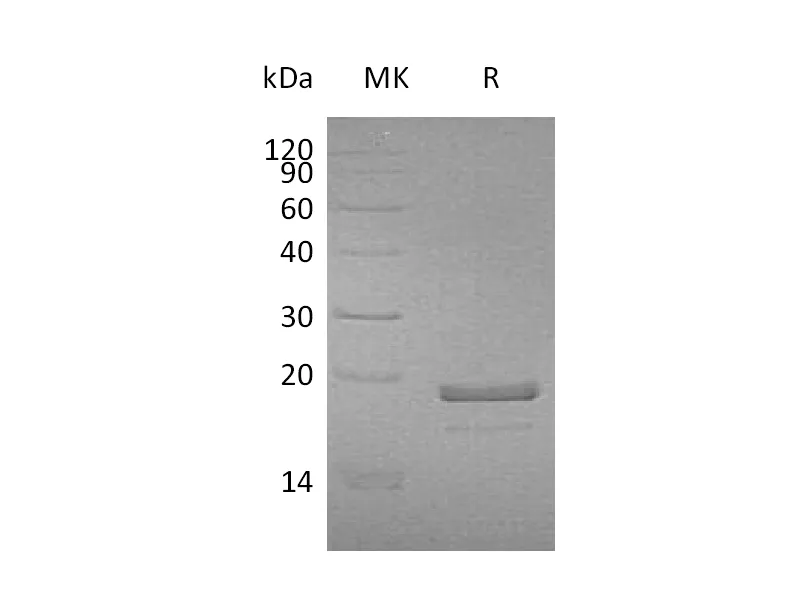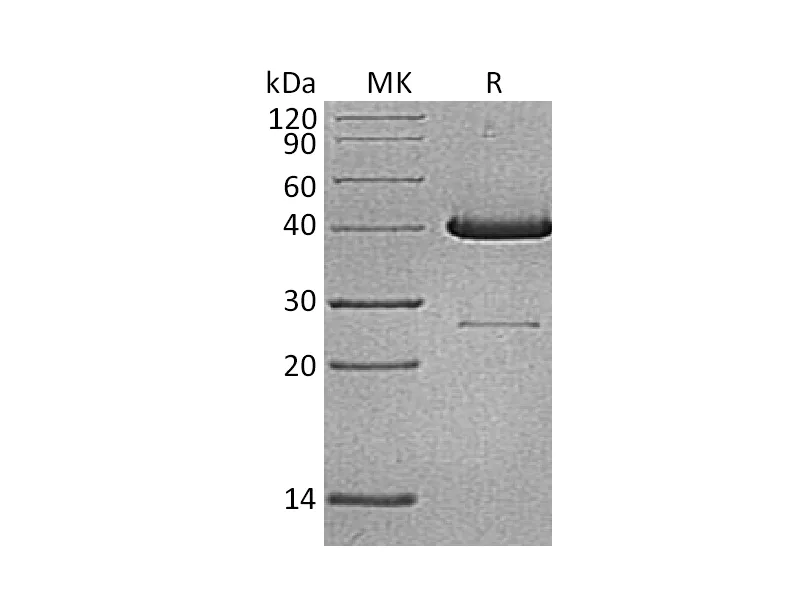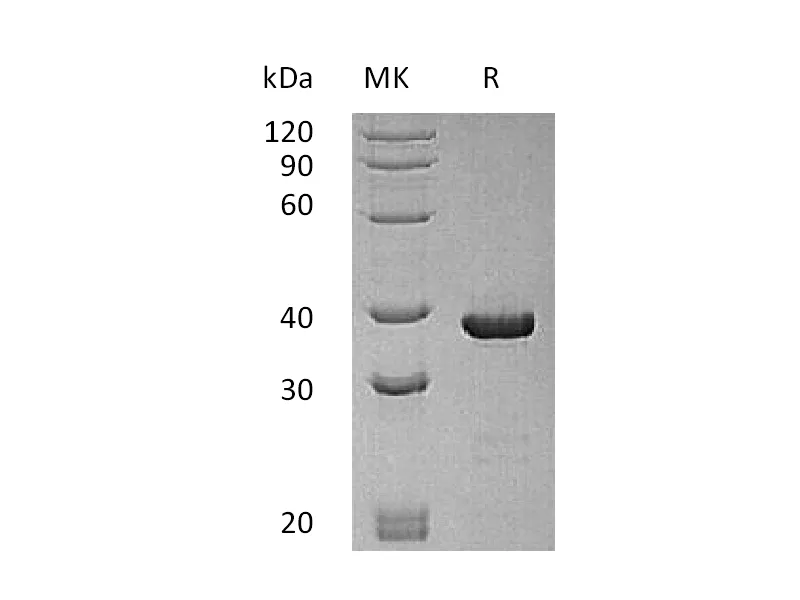| 产品名称 |
Recombinant Mouse KLK7 (C-6His) |
| 英文名称 |
Kallikrein 7/KLK7 |
| 纯度 |
Greater than 95% as determined by reducing SDS-PAGE |
| 内毒素 |
<1 EU/µg as determined by LAL test. |
| 蛋白构建 |
Recombinant Mouse Kallikrein 7 is produced by our Mammalian expression system and the target gene encoding Gln22-Arg249 is expressed with a 6His tag at the C-terminus. |
| Accession |
Q91VE3 |
| 表达宿主 |
Human Cells |
| 种属 |
Mouse |
| 预测分子量 |
26.1 KDa |
| 制剂 |
Lyophilized from a 0.2 μm filtered solution of 20mM HEPES, 150mM NaCl, pH 7.4. |
| 运输方式 |
The product is shipped at ambient temperature.Upon receipt, store it immediately at the temperature listed below. |
| 稳定性&储存 |
Store at ≤-70°C, stable for 6 months after receipt.Store at ≤-70°C, stable for 3 months under sterile conditions after opening. Please minimize freeze-thaw cycles. |
| 复溶 |
Always centrifuge tubes before opening.Do not mix by vortex or pipetting.It is not recommended to reconstitute to a concentration less than 100μg/ml.Dissolve the lyophilized protein in distilled water.Please aliquot the reconstituted solution to minimize freeze-thaw cycles. |
| 分子别名 |
| Kallikrein-7; Klk7; Serine protease 6; Stratum corneum chymotryptic enzyme; Thymopsin; kallikrein-related peptidase 7; PRSS6; SCCEkallikrein-7 |
| 背景介绍 |
| Kallikrein7, also named as stratum corneum chymotryptic enzyme (SCCE), is a secreted protein of the Kallikrein-related peptidase (KLK) family. This family contains fifteen homologous secreted serine endopeptidases and plays a significant role in various physiological processes, including skin desquamation, semen liquefaction, neural plasticity, and body fluid homeostasis. In skin KLK5, KLK 7 and KLK14 are able to degrade corneodesmosomes, which leads to desquamation of skin surface cells. KLK activation is believed to be mediated through highly organized proteolytic cascades, regulated through a series of feedback loops, inhibitors, auto-degradation and internal cleavages. Studies have shown that one potential physiological activator for KLK7 is KLK5. Along with KLK14, these three kallikreins form a proteolytic cascade in the stratum corneum. KLK7 is primarily expressed in the skin but is also detected at relatively high levels in esophagus, heart, liver, central nervous system, kidney, pancreas, mammary and salivary glands. |
注意事项
本司产品仅用于科研,不用于临床诊断和治疗




